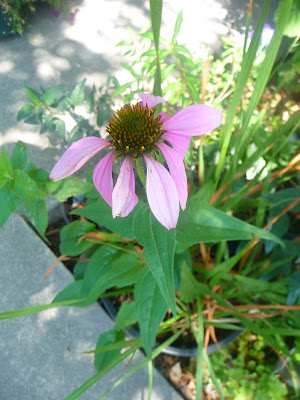Lotus berthelotii or Parrots Beak
My grandmother send me some cash in my birthday card, which I pretty much immediately ran out and spent on this plant and the orange pot it's in.
These guys are supposed to be sensitive to cold, so when I bought it a few months ago, when it was still cold at night, I kept it in the house on the sill of a south facing window. and when it warmed up I moved it outside. It grew a lot when I re-potted it, and this week it started blooming!
Most Lotus need 40° F nights to induce bloom, but not this vibrant-hued variety. Night temperatures can be as high as 55 - 60° F.
Parrot's Beak or Lotus Vine is a great plant that fills the needs for a silver, soft-foliaged plant, as well as a trailing silver plant that flowers. However, the flowering part is short lived, based upon where you live and how fast the temperature rises in the spring. Parrot's Beak needs cool temperatures in order to initiate flowers, and will start and continue to bloom only if the spring temperatures do not climb too fast or spike (when there really is no spring and you fast forward to summer.) If you have warm night temperatures the plant will quickly go out of flower.
In warm-winter areas, lotus is a striking evergreen perennial groundcover. It grows best in full sun with well-drained soil.
Light:
Sun
Zones:
10-11
Plant Type:
Annual,Perennial
Plant Height:
To 8 inches tall
Plant Width:
To 2 feet wide
Landscape Uses:
Containers,Beds & Borders,Privacy,Slopes,Groundcover
Special Features:
Flowers,Attractive Foliage,Easy to Grow



















































